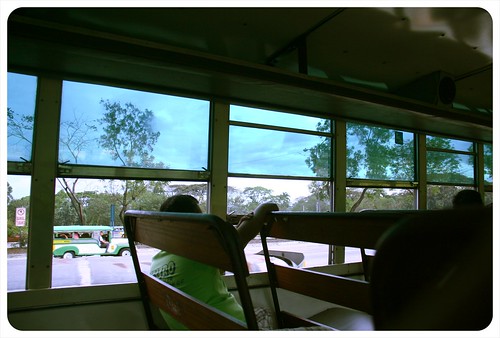
I’ve been taking the ‘ordinary’ bus to school the past three weeks. ‘Ordinary’ buses are what people in Metro Manila call buses that don’t have airconditioning. They have the cheapest fares, and they are most usually the fastest among public utility vehicles (PUV’s).
Yesterday, the bus I was riding to school got ticketed for overspeeding along Commonwealth Avenue, a road known as, aside from being the country’s widest avenue, the killer highway–(it has been declared a ‘traffic discipline’ zone since the beginning of the year precisely because of this). The bus got held up by MMDA traffic enforcers for around fifteen minutes before it got ‘released’. Then it resumed speeding through Quezon Avenue!
Another reason why ordinary buses seem to be the fastest among PUV’s is that they don’t pick up passengers as often as jeepneys nor do they stop as long as jeepneys, FX taxis or air-conditioned buses when picking up passengers. That means when you hail an ordinary bus you have to jog a little in the same direction as the bus in order to grab the railings before hopping in. Sometimes they stop for passengers while in the middle of the road so you have to do some crisscrossing with other vehicles as well.
When all seats are occupied, you have to grab the overhead railings instead and stand on the aisle for the rest of the trip, or until a seat frees up. It feels like hanging on monkey bars at the playground as you sway side to side, back and forward as the bus speeds through the highway.
Since they’re the cheapest, especially on longer routes, ordinary buses are highly patronized by students, construction workers and other minimum (and below-minimum) wage earners.
I appreciate ordinary buses. Whether on provincial trips (I rode ‘ordinary’ buses to Sagada, Zambales, Infanta, Iloilo, Albay), or here in the Metro Manila, I seem to have grown a fascination over them. It doesn’t feel ordinary at all.
